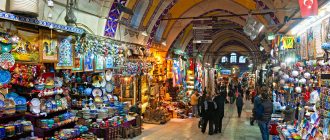The Turkish variety of bowls and dishes is unique and has a long cultural history attached. Read our guide for more facts and information…
The Turkish ceramic-making art has been passed down from the 16th century and has continued to develop to date. Turkish ceramics have expanded into vessels including vases, lamps, candleholders, mugs and bowls.
Ottoman Ceramics
The first Turkish porcelain crockery can be dated back to 1845 at a factory in Beykoz, Istanbul. The factory was producing Turkish wall tiles, dishes, bowls, pitchers and other items of daily use. The crockery was designed with floral elements inspired by European designs. Some dishesd had knobs shaped as vegetables, flowers and fruits.
The second factory in Yildiz also had a range of dishes, plates, bowls, vases and plaques. They were decorated with views of Istanbul and pictures of sultans. They were European porcelains which were designed to match the Turkish taste. This is why they were decorated with colored flowers and oriental patterns.
Silver Turkish crockery was presented to the sultans of the Ottoman. Today the antique silverware is kept in Topkapi in the palace collection. They include pieces from the 16th century onwards. Many silver bowls and dishes were melted down during that time.
The remaining artefacts are decorated with inlay, niello, latticework and repousse which were used in the early days. Small silver bowls are engraved with motifs of the Far Eastern origin.
The decorative motifs of the antique Turkish silver dishes and bowls reflect the different taste of the Oottoman periods. They bear monograms of sultans of those periods.
The Turkish silver crockery also reflects the Islamic art and Middle Eastern roots. They are characterized by complex and detailed designs, motifs, geometric prints which are the continuation of the Iranian Seljuk tradition.
Turkish Designs
The designs depend on calligraphy, floral elements of naturalistic styles and geometric patterns. The designs are simple yet intricate, relaxed and free. They offer a wide scope for experimentation with new styles and arrangements.
The traditional designs of Turkish ceramics have been plant motifs, Chinese clouds, arabesques which have transitioned towards nature including flowers such as tulips, roses, lilies, carnations, cypress trees as well as vine leaves etc.
They come in rich, light and subtle colours such as lilac, yellow, turquoise, cobalt blue, pistachio and black.
The silver varieties are generally used as part of formal crockery collection while other Turkish bowls and dishes are used for daily use. The prices vary based on the variety, style and design you buy.
You can purchase them online or from home stores, malls and small antique places in Turkey. So purchase them and add a cultural touch to your collection today.





